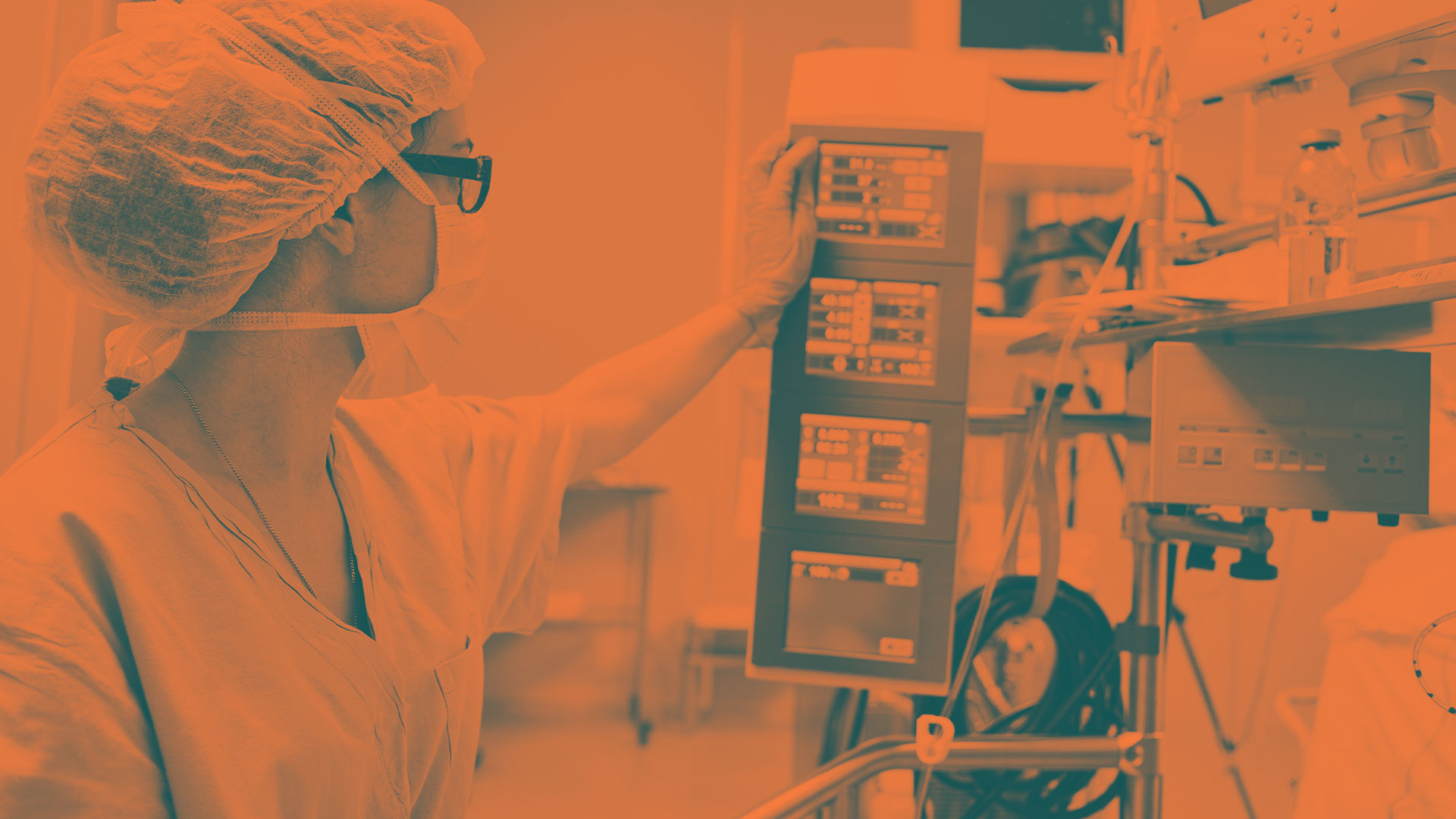
Linda Mongero, CCP, is a perfusionist who has always enjoyed exploring the natural sciences. The field of cardiovascular perfusion opened the doors for her to discover her strengths as the director of clinical perfusion at a major medical center, clinical instructor at several perfusion schools, officer of professional organizations, and author of numerous research articles.
What is a Day in the Life of a Perfusionist?
Pre-op:
You would start with arriving at the scheduled operating room and signing in. After changing into scrubs, you would gather all supplies needed for the case: documentation, priming solutions, disposables, perfusion packs, heart-lung machine, and medications. Next would be plugging in and testing the integrity of the equipment and then beginning the sterile set up of disposable equipment and priming of the circuit. Then, you would discuss the plan for the procedure with the surgeon and any additional requirements for this particular patient. Reviewing the patient’s chart and filling out the initial perfusion clinical record would come next. You would review for any possible contraindications, illnesses, and/or allergies that should be noted or discussed with the surgeon. Lastly, ensure backup equipment is available for emergency use.
Peri-op:
At this point, you would focus on monitoring the initiation of bypass and cardioplegia delivery during the cross clamp period. Measure the flow pressure and time intervals, as well as coagulation and hemodilution. Document all of the processing information on the patient’s chart and any additional medications, and process cardiotomy suction blood. The perfusionist guarantees adequate perfusion and fluid balance during cardiopulmonary bypass. Monitor hemoglobin concentration and colloidal oncotic pressure while continually communicating acid base balances with the anesthesiologist and surgeon. Observe safe cooling and rewarming temperature gradients to ensure they never exceed 37.0 °C. Cooperate with anesthesia and the surgeon to wean the patient from cardiopulmonary bypass. Monitor patient recovery and be prepared to reinitiate CPB, VAD, or ECMO support.
Post-op:
The perfusionist collects the extracorporeal circuit lines from the surgical field for processing residual blood for washing and returns to the patient. The completion of the perfusion record is legible, accurate, and placed into the patient’s chart. Monitor patient vitals to ensure the patient is stable during this immediate post-CPB period and communicate with the TEAM as a safety precaution. Disinfect equipment to prepare for the next surgery or for storage. Then, correctly enter all case documentation, including clinical quality data, into the CDS system so that quality reports can be made and distributed at the end of each quarter. If variances occurred during this case, a variance report will be made as well.
What Do You Wish All Perfusionists Knew to Prepare Themselves for Before Starting Their Careers?
Perfusionists should know basic and medical sciences, manual and technical skills, and participation skills in surgical procedures. They should obtain a bachelor’s degree, graduate from an Accredited Perfusion Technology Program or approved program of Extracorporeal Technology, and gain certification through the American Board of Cardiovascular Perfusion to become a certified clinical perfusionist (CCP). The work environment of a cardiovascular perfusionist is within a typical operating room within a hospital or large surgical center. They may find themselves standing for a majority of their day, as well needing to operate heavy and intricate equipment. Cardiovascular perfusionists generally report the ability to maintain an appropriate work-life balance, but their work shifts vary. While most typically work a 40-hour work week, they are required to work a variety of shifts such as days, nights, weekends, rotating holidays, and on-call.
How Does a Perfusionist Enhance the Dynamic of the OR?
The perfusionist is the unsung hero that becomes your heart and lungs when you need support. The cardiac perfusionist shares responsibility with the cardiac surgeon and anesthesiologist for the maintenance of vital functions during surgery. The perfusionist provides the surgeon the means to operate on a still, unbeating heart. Without the skill-set of the perfusionist, open heart surgery could not be performed. While the surgeon operates, he relies upon the perfusionist to perform this vital role but not without communication and understanding principles and protocols. Let’s not forget, you will also be taking care of the surgeon to an extent. When the surgeons have confidence in you, they can relax and just concentrate on the operation, which is where their focus needs to be in the first place. You also support patient care by showing concern for others, paying attention to detail, providing communication, and exhibiting mental and physical endurance.
What is One Way a Perfusionist can Set One’s Self Up for Greatness?
Create a vision. Turn adversity into advantage. Be a champion in mindset. Work hard. Have a positive attitude. READ, READ, READ.
What is a Perfusion Resource You Enjoy and Trust?
Main journals include JECT and Perfusion.
What was Surprising to You About the Career When You First Started?
Long demanding days with little time for myself was an adjustment. Learning to persevere and channel the hard work into gaining recognition for excellence was a gamechanger. Researching and writing one paper a year on interesting case reports or volunteering to help with ongoing projects enhanced my personal fulfillment with the career.
What are the Benefits of a Career in Perfusion?
YOU GET TO HELP SAVE LIVES!

Comments are closed.